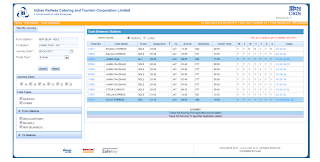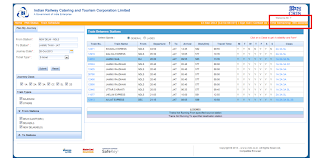More about the NSA's Tailored Access Operations Unit
Der Spiegel has a good article on the NSA's Tailored Access Operations unit: basically, its hackers."Getting the ungettable" is the NSA's own description of its duties. "It is not about the quantity produced but the quality of intelligence that is important," one former TAO chief wrote, describing her work in a document. The paper seen by SPIEGEL quotes the former unit head stating that TAO has contributed "some of the most significant intelligence our country has ever seen." The unit, it goes on, has "access to our very hardest targets." Defining the future of her unit at the time, she wrote that TAO "needs to continue to grow and must lay the foundation for integrated Computer Network Operations," and that it must "support Computer Network Attacks as an integrated part of military operations." To succeed in this, she wrote, TAO would have to acquire "pervasive, persistent access on the global network." An internal description of TAO's responsibilities makes clear that aggressive attacks are an explicit part of the unit's tasks. In other words, the NSA's hackers have been given a government mandate for their work. During the middle part of the last decade, the special unit succeeded in gaining access to 258 targets in 89 countries -- nearly everywhere in the world. In 2010, it conducted 279 operations worldwide.The article also has more details on how QUANTUM -- particularly, QUANTUMINSERT -- works.
[...]
Certainly, few if any other divisions within the agency are growing as quickly as TAO. There are now TAO units in Wahiawa, Hawaii; Fort Gordon, Georgia; at the NSA's outpost at Buckley Air Force Base, near Denver, Colorado; at its headquarters in Fort Meade; and, of course, in San Antonio.
Until just a few years ago, NSA agents relied on the same methods employed by cyber criminals to conduct these implants on computers. They sent targeted attack emails disguised as spam containing links directing users to virus-infected websites. With sufficient knowledge of an Internet browser's security holes -- Microsoft's Internet Explorer, for example, is especially popular with the NSA hackers -- all that is needed to plant NSA malware on a person's computer is for that individual to open a website that has been specially crafted to compromise the user's computer. Spamming has one key drawback though: It doesn't work very often. Nevertheless, TAO has dramatically improved the tools at its disposal. It maintains a sophisticated toolbox known internally by the name "QUANTUMTHEORY." "Certain QUANTUM missions have a success rate of as high as 80%, where spam is less than 1%," one internal NSA presentation states.Another article discusses the various tools TAO has at its disposal.
A comprehensive internal presentation titled "QUANTUM CAPABILITIES," which SPIEGEL has viewed, lists virtually every popular Internet service provider as a target, including Facebook, Yahoo, Twitter and YouTube. "NSA QUANTUM has the greatest success against Yahoo, Facebook and static IP addresses," it states. The presentation also notes that the NSA has been unable to employ this method to target users of Google services. Apparently, that can only be done by Britain's GCHQ intelligence service, which has acquired QUANTUM tools from the NSA.
A favored tool of intelligence service hackers is "QUANTUMINSERT."
[...]
Once TAO teams have gathered sufficient data on their targets' habits, they can shift into attack mode, programming the QUANTUM systems to perform this work in a largely automated way. If a data packet featuring the email address or cookie of a target passes through a cable or router monitored by the NSA, the system sounds the alarm. It determines what website the target person is trying to access and then activates one of the intelligence service's covert servers, known by the codename FOXACID.
This NSA server coerces the user into connecting to NSA covert systems rather than the intended sites. In the case of Belgacom engineers, instead of reaching the LinkedIn page they were actually trying to visit, they were also directed to FOXACID servers housed on NSA networks. Undetected by the user, the manipulated page transferred malware already custom tailored to match security holes on the target person's computer.
The technique can literally be a race between servers, one that is described in internal intelligence agency jargon with phrases like: "Wait for client to initiate new connection," "Shoot!" and "Hope to beat server-to-client response." Like any competition, at times the covert network's surveillance tools are "too slow to win the race." Often enough, though, they are effective. Implants with QUANTUMINSERT, especially when used in conjunction with LinkedIn, now have a success rate of over 50 percent, according to one internal document.
A document viewed by SPIEGEL resembling a product catalog reveals that an NSA division called ANT has burrowed its way into nearly all the security architecture made by the major players in the industry -- including American global market leader Cisco and its Chinese competitor Huawei, but also producers of mass-market goods, such as US computer-maker Dell. [...]The German version of the article had a couple of pages from the 50-page catalog of tools; they're now on Cryptome. Leaksource has the whole TOP SECRET catalog; there's a lot of really specific information here about individual NSA TAO ANT devices. (We don't know what "ANT" stands for. Der Spiegel speculates that it "stands for Advanced or Access Network Technology.") For example:
In the case of Juniper, the name of this particular digital lock pick is "FEEDTROUGH." This malware burrows into Juniper firewalls and makes it possible to smuggle other NSA programs into mainframe computers. Thanks to FEEDTROUGH, these implants can, by design, even survive "across reboots and software upgrades." In this way, US government spies can secure themselves a permanent presence in computer networks. The catalog states that FEEDTROUGH "has been deployed on many target platforms."
[...]
Another program attacks the firmware in hard drives manufactured by Western Digital, Seagate, Maxtor and Samsung, all of which, with the exception of the latter, are American companies. Here, too, it appears the US intelligence agency is compromising the technology and products of American companies.
[...]
There is no information in the documents seen by SPIEGEL to suggest that the companies whose products are mentioned in the catalog provided any support to the NSA or even had any knowledge of the intelligence solutions.
(TS//SI//REL) SOUFFLETROUGH is a BIOS persistence implant for Juniper SSG 500 and SSG 300 series firewalls. It persists DNT's BANANAGLEE software implant. SOUFFLETROUGH also has an advanced persistent back-door capability.And NIGHTSTAND:
(TS//SI//REL) An active 802.11 wireless exploitation and injection tool for payload/exploit delivery into otherwise denied target space. NIGHTSTAND is typically used in operations where wired access to the target is not possible.NIGHTSTAND can work from as far away as eight miles, and "the attack is undetectable by the user."
One more:
(TS//SI//REL) DROPOUTJEEP is a software implant for Apple iPhone that utilizes modular mission applications to provide specific SIGNIT functionality. This functionality includes the ability to remotely push/pull files from the device, SMS retrieval, contact list retrieval, voicemail, geolocation, hot mic, camera capture, cell tower location, etc. Command, control, and data exfiltration can occur over SMS messaging or a GPRS data connection. All communications with the implant will be covert and encrypted. (TS//SI//REL) The initial release of DROPOUTJEEP will focus on installing the implant via close access methods. A remote installation capabilitiy will be pursued for a future release.There's lots more in the source document. And note that this catalog is from 2008; presumably, TAO's capabilities have improved significantly in the past five years.
And -- back to the first article -- TAO can install many of the hardware implants when a target orders new equipment through the mail:
If a target person, agency or company orders a new computer or related accessories, for example, TAO can divert the shipping delivery to its own secret workshops. The NSA calls this method interdiction. At these so-called "load stations," agents carefully open the package in order to load malware onto the electronics, or even install hardware components that can provide backdoor access for the intelligence agencies. All subsequent steps can then be conducted from the comfort of a remote computer. These minor disruptions in the parcel shipping business rank among the "most productive operations" conducted by the NSA hackers, one top secret document relates in enthusiastic terms. This method, the presentation continues, allows TAO to obtain access to networks "around the world."They can install the software implants using techniques like QUANTUM and FOXACID.
Related a list of NSA attack tools. And here is another article on TAO from October.
Remember, this is not just about the NSA. The NSA shares these tools with the FBI's black bag teams for domestic surveillance, and presumably with the CIA and DEA as well. Other countries are going to have similar bags of tricks, depending on their sophistication and budgets. And today's secret NSA programs are tomorrow's PhD theses, and the next day's criminal hacking tools. Even if you trust the NSA to only spy on "enemies," consider this an advance warning of what we have to secure ourselves against in the future.
I'm really happy to see Jacob Appelbaum's byline on the Der Spiegel stories; it's good to have someone of his technical ability reading and understanding the documents.
Slashdot thread. Hacker News thread. MetaFilter thread. Ars Technica article. Wired article. Article on Appelbaum's talk at 30c3.


















































